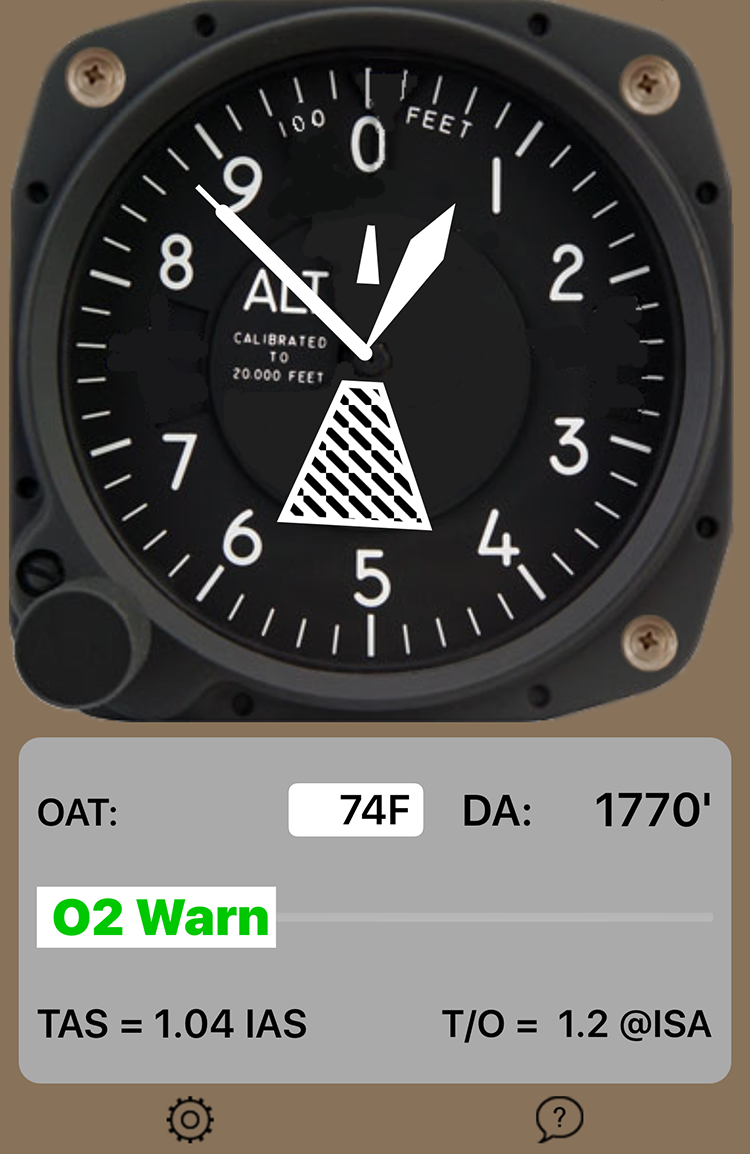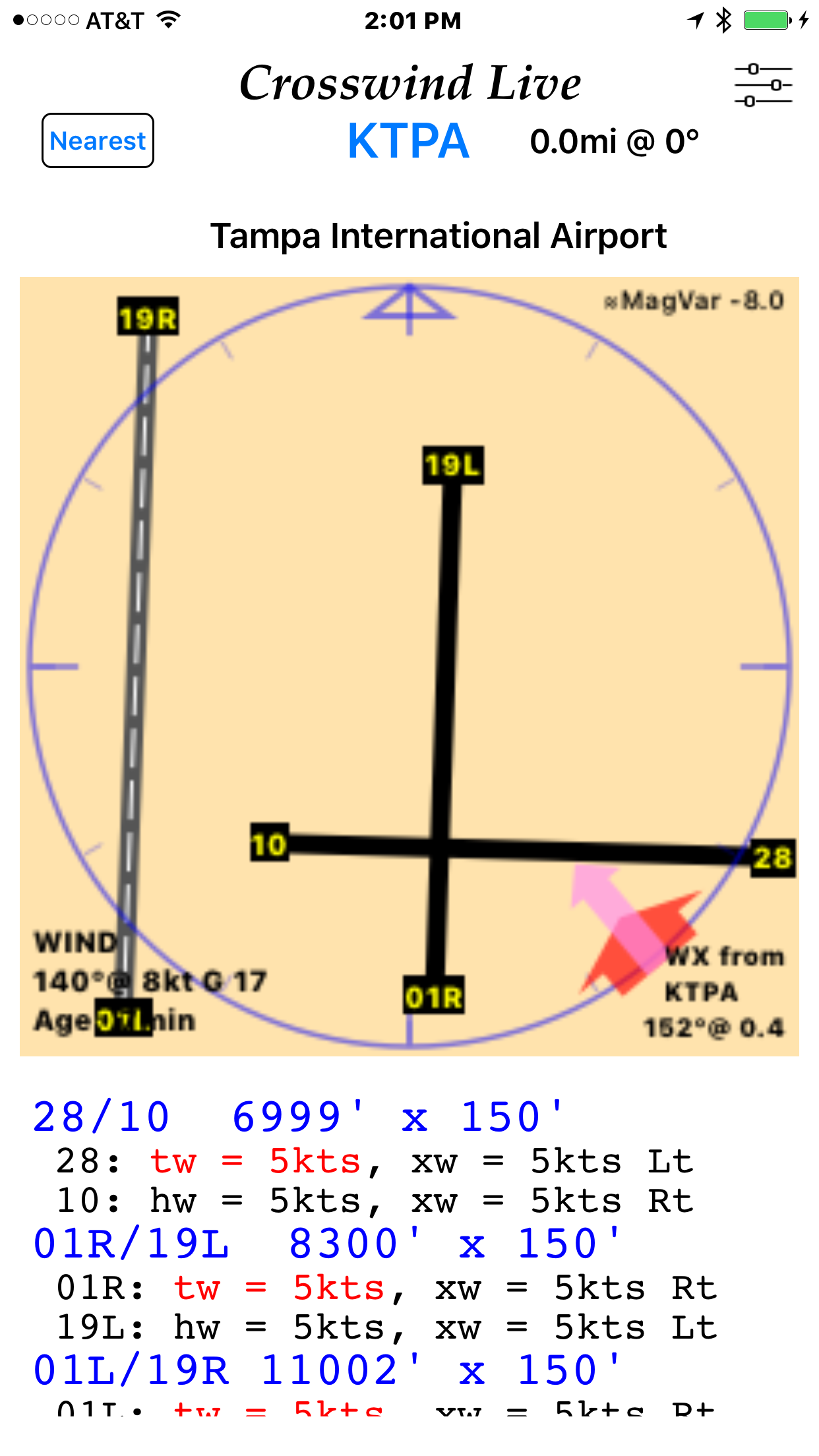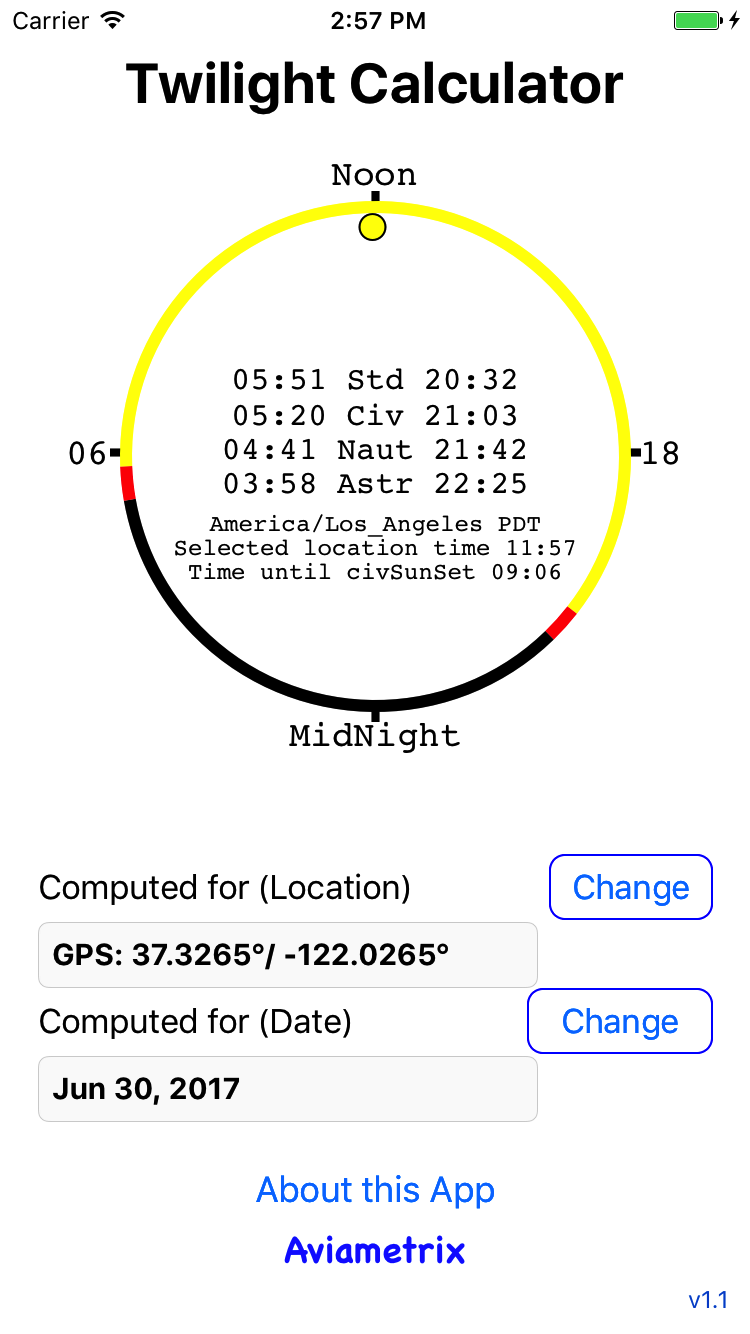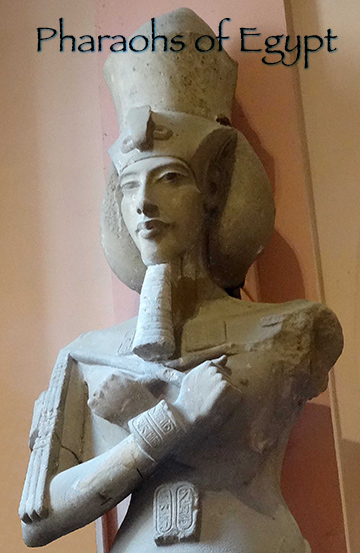Civil Twilight Calculator User's Manual
Pilots often need to be aware of a peculiar time of day known as Civil Twilight.
Again, officially, these times are defined in US 14 CFR 1.1 as those published in the Air Almanac by the U.S. Naval Observatory. Not everyone carries a copy of the Almanac around, so this app was written to provide an unofficial, but close approximation of civil twilight anywhere in the world on any date (± about 30 years). No WiFi or other internet connection is required, all the calculation are done in the phone or pad. A database of locations of the world's airports is included inside this app. If you have GPS in your device, then you can obtain the twilight times at your current location. If you have internet, then you can find the latitude and longitude for any street address, and the App will calculate the twilight times at that address.
This App is not FAA TSO!
It has been tested, but not exhaustively so.
No warranty of any kind is offered or implied.
Changing Date. The app will normally compute the sunrise and set data for the current date and time of day. However, it can also compute the data for arbitrary dates in the past and future using a standard Date Picker interface.
Introduction to the Wacky World of Night (Aviation Style)
There are three main situations in aviation that require a knowledge of when night occurs:
- Logging time for training and experience for ratings
- Currency in takeoffs and Landings
- Safety Lighting (Position and AntiCollision Lights)
Of course, each uses a different definition of Night. Training and experience use 14 CFR 1.1. Currency in takeoffs and landings uses 14 CFR 61.57, and Safety lighting uses 14 CFR 91.209.
14 CFR §1.1 General definitions.
Flight time means:
(1) Pilot time that commences when an aircraft moves under its own power for the purpose of flight and ends when the aircraft comes to rest after landing; or
(2) For a glider without self-launch capability, pilot time that commences when the glider is towed for the purpose of flight and ends when the glider comes to rest after landing.
Night means the time between the end of evening civil twilight and the beginning of morning civil twilight, as published in the Air Almanac, converted to local time.
14 CFR §61.57 Recent flight experience: Pilot in command.
(b) Night takeoff and landing experience. (1) Except as provided in paragraph (e) of this section, no person may act as pilot in command of an aircraft carrying passengers during the period beginning 1 hour after sunset and ending 1 hour before sunrise, unless within the preceding 90 days that person has made at least three takeoffs and three landings to a full stop during the period beginning 1 hour after sunset and ending 1 hour before sunrise, and—
(i) That person acted as sole manipulator of the flight controls; and
(ii) The required takeoffs and landings were performed in an aircraft of the same category, class, and type (if a type rating is required).
(2) The takeoffs and landings required by paragraph (b)(1) of this section may be accomplished in a flight simulator that is—
(i) Approved by the Administrator for takeoffs and landings, if the visual system is adjusted to represent the period described in paragraph (b)(1) of this section; and
(ii) Used in accordance with an approved course conducted by a training center certificated under part 142 of this chapter.
14 CFR 91.209 - Aircraft lights
No person may:(a) During the period from sunset to sunrise (or, in Alaska, during the period a prominent unlighted object cannot be seen from a distance of 3 statute miles or the sun is more than 6 degrees below the horizon) -
(1) Operate an aircraft unless it has lighted position lights;
(2) Park or move an aircraft in, or in dangerous proximity to, a night flight operations area of an airport unless the aircraft -
(i) Is clearly illuminated;
(ii) Has lighted position lights; or
(iii) is in an area that is marked by obstruction lights;
(3) Anchor an aircraft unless the aircraft -
(i) Has lighted anchor lights; or
(ii) Is in an area where anchor lights are not required on vessels; or
(b) Operate an aircraft that is equipped with an anticollision light system, unless it has lighted anticollision lights. However, the anticollision lights need not be lighted when the pilot-in-command determines that, because of operating conditions, it would be in the interest of safety to turn the lights off.
This software was conceived, designed and executed by the crew at Aviametrix, LLC. Copyright © 2015-2017 Aviametrix, LLC, All Rights Reserved
Astronomy data formulae (c) Paul Schlyter, 1989, 1992. Released to the public domain by Paul Schlyter, December 1992
Time Zone Calculations Created by Sergii Kryvoblotskyi on 10/17/13. Copyright © 2013 Alterplay. All rights reserved.
This App is not FAA TSO!
It has been tested, but not exhaustively so.
No warranty of any kind is offered or implied.






